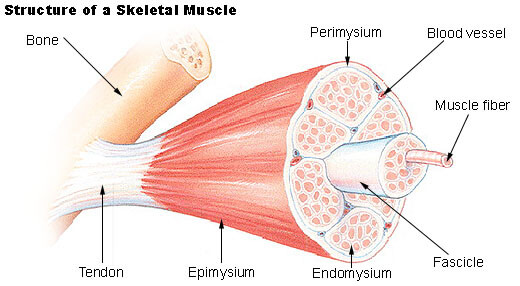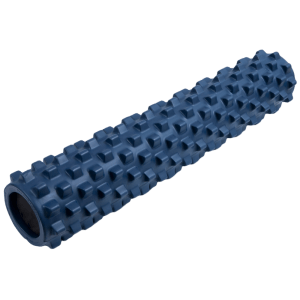Stretching for tendons. Let’s talk about it.
Stretching your muscles regularly is just a good idea all the way around. But there are a lot of people out there who talk about stretching the tendons as well. With tendons the possible benefits are less clear, and unfortunately it’s pretty much impossible to stretch a muscle and not stretch the tendons that are connected to it at the same time.
Muscles work by contracting lots of fibers, each of which contains smaller fibers within them, and each of those smaller fibers contains even smaller fibers within them.

Furthermore, these fibers have a bit of elasticity to them. When you use your muscles, these fibers contract 100% (not all of the fibers at the same time, of course; just enough to get the job done) and then they relax. So you’ve got muscle fibers sliding along each other on at least three different levels of size if you’re doing anything more strenuous than lifting a piece of paper.
Sometimes your muscles develop adhesions, which is basically some of the fibers sticking together so that they don’t slide properly, and failing to release. These sticking points can get really painful if left untreated, and stretching after exercise (and just on a daily basis in general) goes a long way toward preventing this.
But now let’s look at tendons. Tendons are made up of collagen, which is a completely different structure. It attaches your muscles to your bones, and is less elastic. There have been a lot of studies done on the effects of stretching tendons before exercise, and the results are unclear. In some sports it seems to help performance and prevent injuries, and in others the opposite occurs. Basically, it breaks down to the type of sport that you’re doing. If you engage in something like American football or soccer, which is pretty high-impact, stretching seems to help. If you’re doing something low-impact, like swimming or cycling, then it may actually detract from performance, because in these sports you want the muscle power to be transmitted directly to the pedal or whatever. Having a stretched and elastic tendon makes this less efficient. And if you’re lifting heavy weights (close to maximal effort) like powerlifters and strongmen do, then stretching right before a lift can actually increase the likelihood of injury.
So what should you do? Well, here are some recommendations:
1. Unless you’re doing something that’s high-impact, warm up by performing light movements of the same type that you’re going to be doing when you exercise. So for swimmers mimicking the arm strokes before you get into the water would be a good idea.
2. Include foam rolling in your warm-up. Foam rolling is great for breaking up adhesions in both muscles and tendons. Most gyms have cheap ones, and if you’ve never foam rolled before they will do the job just fine. (Foam rolling will likely hurt the first time you try it, so go slowly and lightly.) For more advanced athletes and/or those who have really stubborn adhesions, you can get something like this monster:

It’s called the RumbleRoller and is a foam roller that’s specifically optimized for myofascial release.
3. Save the stretching for the warm-down. You’ll get all the benefits and none of the drawbacks doing it that way, and both your muscles and tendons will thank you.
Stretching is a great way to prevent tendon problems from occurring before they happen. If you already have tendonitis, however, much less long-term tendonosis, it won’t be enough to cure you. So get preventive and start doing it regularly today!

